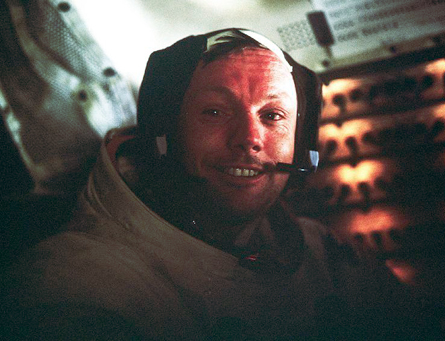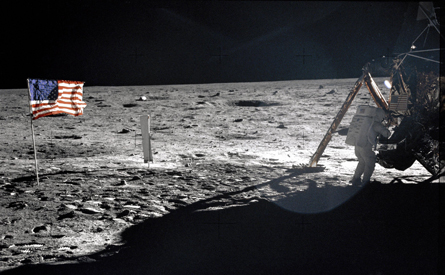- More than 2 years ago
Neil Armstrong landed and walked on the moon, the first of just a dozen men to do so. He died in Ohio on August 25, at age 82.


“Houston, Tranquility Base here,” he told NASA’s mission control after piloting the Apollo 11 lunar module to the surface on July 20, 1969. “The Eagle has landed.”
Six and a half hours later, Armstrong climbed down the spacecraft’s ladder and stood for a moment on one of its saucer-shaped footpads. Then he stepped lightly to the left and into the lunar dust. “That’s one small step for a man, one giant leap for mankind,” he said to hundreds of millions of people watching the live television broadcast. (The “a” in his comment was not audible to those on Earth, but Armstrong later insisted he said it, and it has remained a controversy.)
Armstrong’s life was forever defined by that day, but he defined himself foremost as an engineer. He once called himself “a white-socks, pocket-protector, nerdy engineer — born under the second law of thermodynamics, steeped in the steam tables, in love with free-body diagrams, transformed by Laplace and propelled by compressible flow.”
Armstrong was born and grew up in Wapakoneta, Ohio, where he worked odd jobs to pay for flying lessons and earned his student pilot’s license on his sixteenth birthday. With a U.S. Navy scholarship he went on to study aeronautical engineering at Purdue University and then earn a master’s in aerospace engineering from the University of Southern California. Armstrong flew 78 combat missions for the Navy during the Korean War.
In 1955 he joined the National Advisory Committee for Aeronautics, the predecessor to NASA, as a test pilot. Seven years later he joined NASA’s second astronaut class and got the job of piloting the 1966 Gemini 8 mission, the first docking between two spacecraft in orbit. But a thruster malfunctioned, sending the docked spacecraft into a nauseating spin. Armstrong disengaged from the second craft and got Gemini under control for a safe return to Earth.
Those nerves of steel — and experience flying more than 200 kinds of aircraft — came in handy many times during Armstrong’s career.
NASA assigned him to be commander of Apollo 11, the first attempted moon landing. While Michael Collins orbited overhead, Armstrong and Edwin “Buzz” Aldrin descended to the surface in the lunar module. Armstrong, though, saw that the computer was taking them towards a boulder-strewn landing site; he overrode the computer’s instructions and piloted the module down with just seconds of propellant left to spare.
“You’ve got a bunch of guys about to turn blue,” mission control told him. “We’re breathing again. Thanks a lot.”
Armstrong and Aldrin roamed the lunar surface for more than two hours, picking up 47.5 pounds of rocks and soil and leaving behind a seismometer, an American flag and other mementos. On returning to earth, they and Collins spent three weeks in quarantine in case they had brought back any extraterrestrial microbes.
After Apollo, Armstrong worked at a NASA desk job, then retired from the agency in 1971. He returned to Ohio and taught aerospace engineering at the University of Cincinnati for eight years, then worked in the aerospace business. Armstrong continued to serve on various policy committees, including NASA’s panel investigating the 1986 explosion of the space shuttle Challenger and a National Academy of Engineering group on the greatest engineering achievements of the 20th century.
After 1972’s Apollo 17 became the last NASA mission to carry moonwalkers, Armstrong wanted the agency to return astronauts to the moon. In 2008, for NASA’s 50th anniversary, he told an audience that “the goal is far more than just going faster and higher and further. Our goal — indeed our responsibility — is to develop new options for future generations: options in expanding human knowledge, exploration, human settlements and resource development, outside in the universe around us.”
NASA currently has no way to get astronauts to the moon even if it wanted to. The agency is developing a heavy-lift rocket with an eye to sending astronauts to Mars someday.
Armstrong died “following complications resulting from cardiovascular procedures,” according to a statement from his family. He had undergone quadruple bypass heart surgery in the weeks before his death.
Armstrong’s family asked the public to “honor his example of service, accomplishment and modesty.” As well as one more thing: “The next time you walk outside on a clear night and see the moon smiling down at you, think of Neil Armstrong and give him a wink.”






